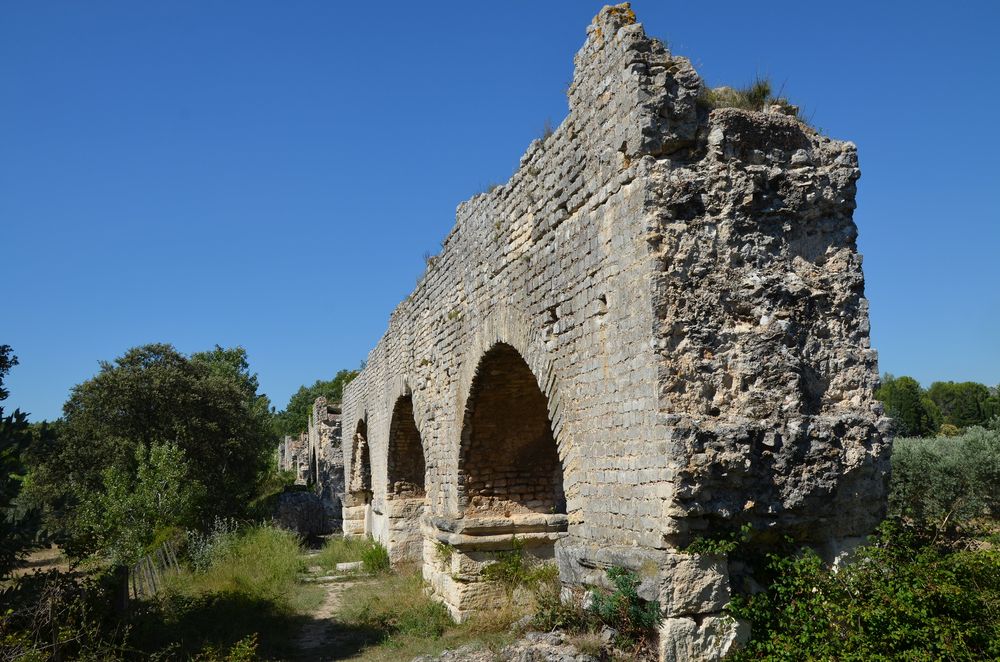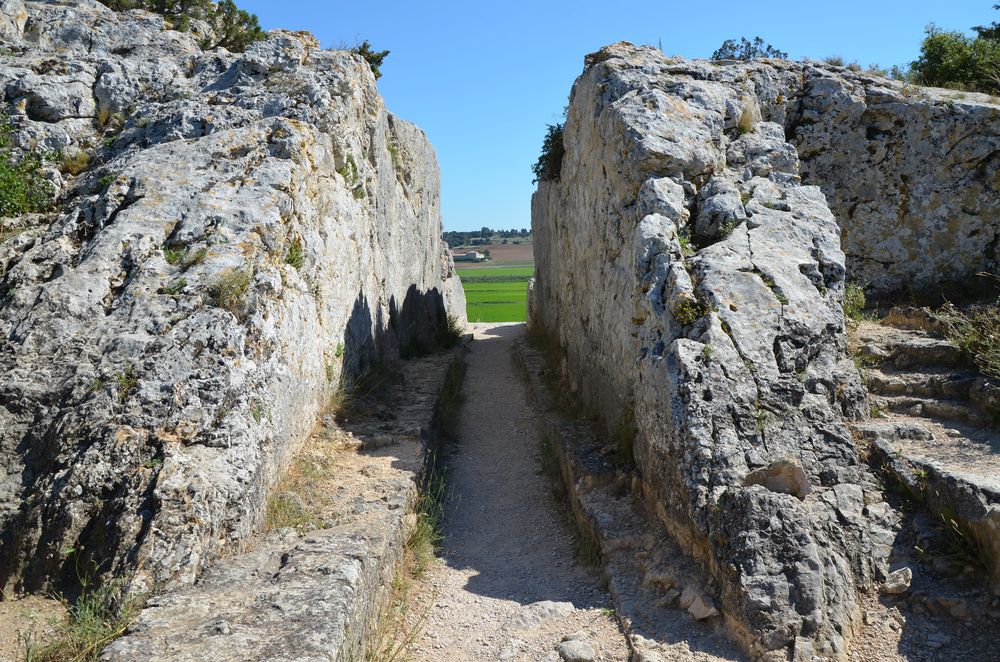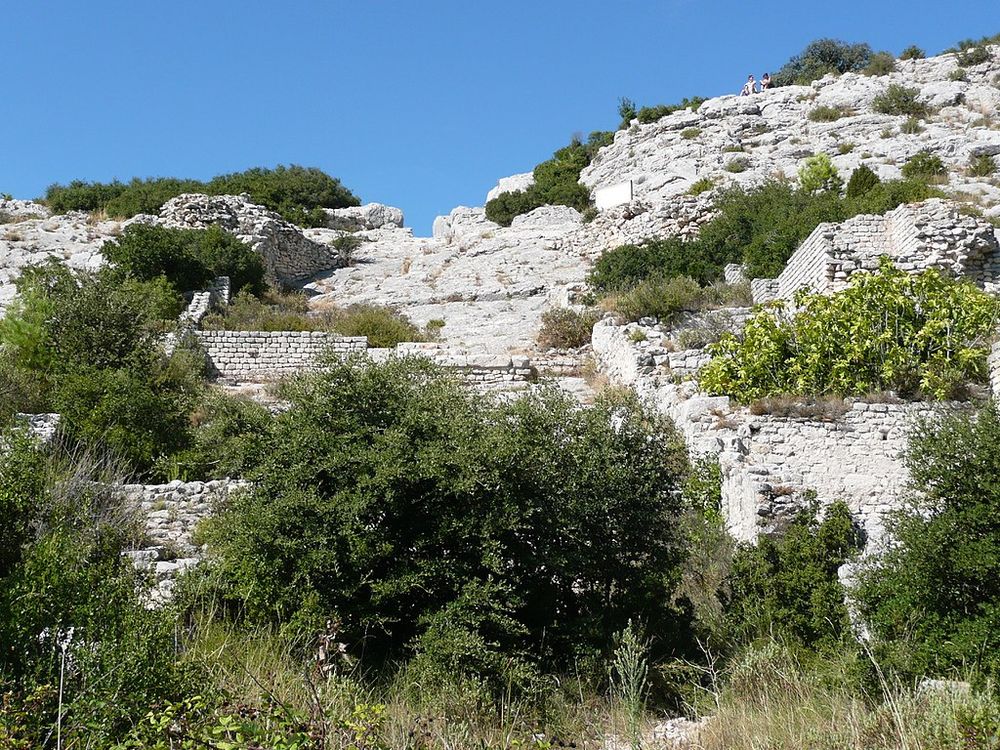About 12 kilometers north of the city of Arles, in the Provence region of southern France, is the small town of Fontvieille. It is a commune of just 3,500 inhabitants who live from agriculture and tourism, but until the 5th century AD it was also the place where the greatest concentration of mechanical energy was found in the entire ancient world.
At the end of the first century A.D., the most important Roman hydraulic complex was built there, consisting of two aqueducts and 16 mills, today called Barbegal. The two aqueducts joined just north of the complex, where a lock controlled the water supply to the mills, and then continued to supply the city of Arelate (today's Arles).

The ruins of the aqueduct of the Barbegal Mills. Photo: Carole Raddato/Flickr
The water flowed down the side of a steep hill along which 16 water wheels were arranged in two parallel sets of eight wheel each on both sides of the channel, so that the flow of the first drove the successive water wheels to the base of the hill.
The capacity of these water wheels, which were used to grind flour, is estimated at about 4.5 tons per day, which would have allowed feeding the entire population of Arelate (which at the beginning of the second century AD numbered approximately 12,500 inhabitants).

Model of the Barbegal mill, Musée de l'Arles antique. Photo: Carole Raddato/Flickr

Illustration by Leandro PP/Shutterstock.com
Some researchers believe that they could also have been used to saw wood and cut stone, when they were not grinding wheat, due to similarity in the arrangement of the mills with those found in some Roman mines in Spain and Wales, as well as with the sawmill at Hierapolis (3rd century AD ), where a rack saw was similarly activated.
It is known that the complex remained in use during the 2nd and 3rd centuries AD, and then gradually declined until its complete destruction and abandonment in the 5th century, coinciding with the invasions that put an end to the western empire.
According to the archaeologist Fernand Benoit the complex could have been built by the Gallo-Roman engineer Q. Candidius Benignus (Fifth Candido Benigno), who belonged to the Arelate carpenters corps and whose sarcophagus bears an inscription that says: no one surpassed him in the art of mechanical engineering and in the conduction of water courses .

The aqueduct. Photo: Carole Raddato/Flickr
As for the ownership of the mills, Benoit believes that they probably belonged to the owner of the Roman villa near La Mérindole.
Today there are important masonry remains of the water channels and foundations of several of the mills, in addition to the stepped channel that goes up the hill, which can be visited. At the Fontvieille tourist office there is a reconstruction of one of the water wheels, and at the Arles Museum you can see a reconstruction of the whole.

Remains of the complex. Photo: maarjaara/Wikimedia Commons
This article was originally published in La Brújula Verde. It has been translated from Spanish and republished with permission.



Comments
Post a Comment